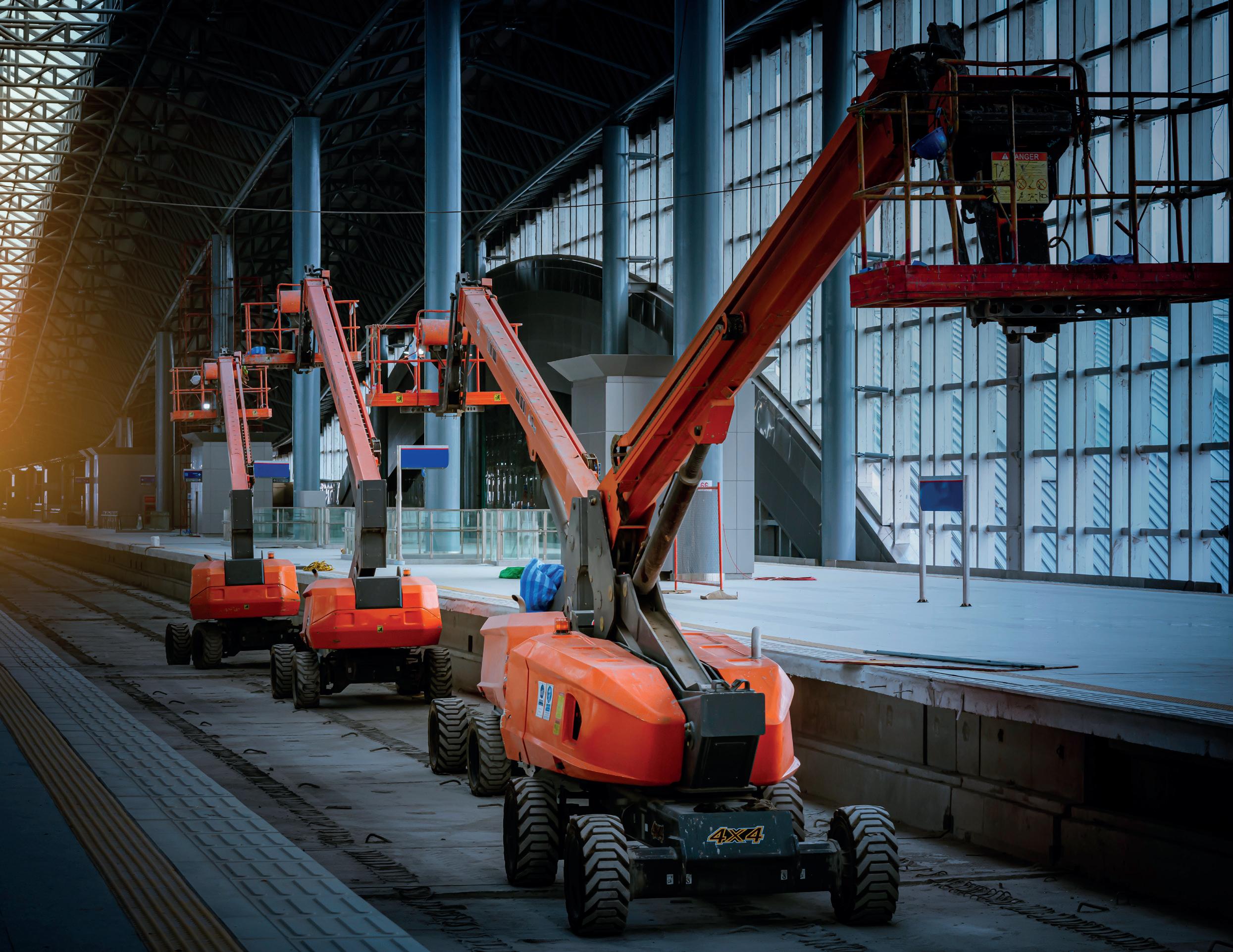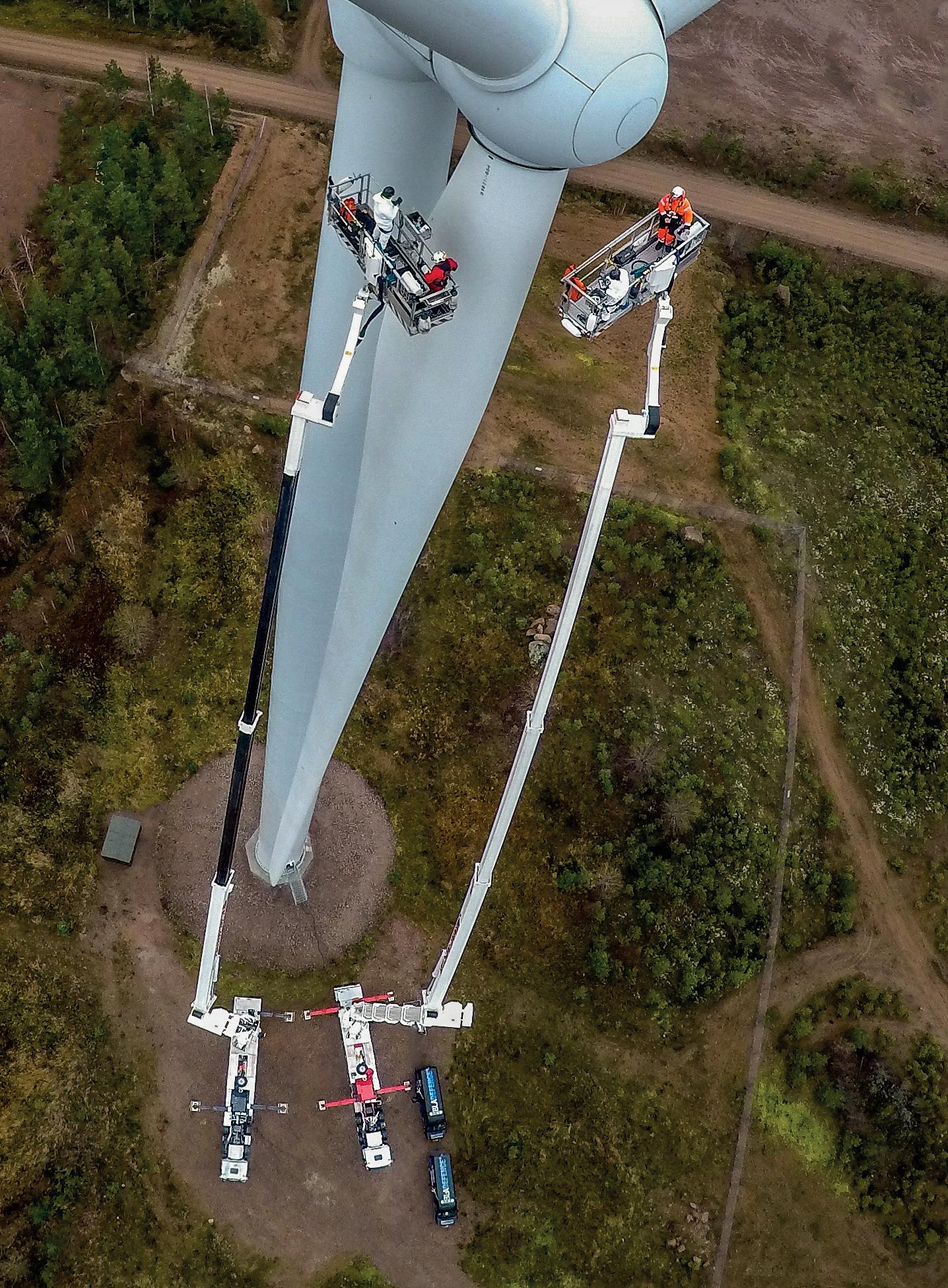
6 minute read
Lessons learned
Accidents result from failure to plan properly
Powered access is widely considered one of the safest methods of conducting temporary work at height, but unfortunately accidents do occasionally still happen.
Advertisement
A work at height risk assessment is about more than just selecting the correct machine: It also involves a rigorous site assessment, including ground conditions and weather, proximity to roads, traffi c, hazards on the ground and overhead, ensuring the operator is adequately trained and familiarised on the equipment, and that operations are conducted and supervised according to recognised safe-work procedures. According to the 2016-2020 data collected and analysed by IPAF, the most common causes of fatal incidents were from falls from the platform (23%), electrocutions (23%), entrapments (19%), MEWP overturns (12%), MEWPs being struck by either a machine or vehicle (6%) or hit by falling object(s) (5%). To inform and assist everything IPAF does to improve work at height safety, we need to gather as much data as possible, especially about minor accidents and near-miss incidents, to understand in detail the underlying causes of all accident types. We already know that in many cases the accident starts with a failure to plan properly. As the adage has it: “Fail to prepare... prepare to fail.” From analysis of the six main types of incident, it is clear many of these fatalities could have been prevented if the use of powered access had been better planned. Planning for any work at height task is key to a safer working environment. Having a competent site assessment carried out or indeed carrying out your own site assessment could identify many potential hazards not easily identifi able at fi rst glance, this would be necessary for anyone elevated in a powered access machine. Consideration must be given to the changing conditions during ongoing work, and these may need to be reassessed periodically.
Adequate planning by a competent person should always be carried out prior to work starting. Considerations should include but not be limited to:


Selecting the correct machine for the job; Appointing a suitably trained and certifi ed operator; Correct selection and use of personal fall protection equipment (PFPE) in boom-type platforms; Confi rmation of both working height and platform height to prevent platform occupant overreaching or having to gain additional height, for instance by standing on guardrails; Ensuring ground obstructions are moved so that operators do not need to compromise safe working practices and overreach from the platform, if any obstructions cannot be moved this must be factored into machine selection; Selection and use where appropriate of secondary guarding and/or measures to prevent falling objects or materials from the platform; Maintaining constant observations prior to and during operation, including identifying any overhead power lines and being aware of safe working distances, and isolation of live lines when these must be exceeded; Checking ground conditions, identifying underground services; Ensuring MEWPs are segregated from pedestrians, all other vehicles and plant equipment; Identifi cation of potential trapping and crushing areas to reduce the risk of entrapment; Selection of and familiarisation with appropriate secondary guarding to mitigate the trapping/crushing risk; Operator awareness of and communication with platform occupants at all times; Preparing, practising and communicating adequate rescue plans and procedures; Familiarising ground rescue personnel; Ensuring work at height is supervised at all times, ideally by trained personnel.

In addition to its certifi ed and globally recognised operator training, IPAF recommends two courses operator training, IPAF recommends two courses specifi cally designed to aid better management and planning of specifi cally designed to aid better management and planning of temporary work at height using powered access: The MEWPs for temporary work at height using powered access: The MEWPs for Managers course is aimed at anyone requiried to plan, deliver Managers course is aimed at anyone requiried to plan, deliver and supervise work at height using MEWPs, while a new course and supervise work at height using MEWPs, while a new course launched in 2021 is the Site Assessment (for MEWP selection), launched in 2021 is the Site Assessment (for MEWP selection), which is ready-made for rental companies and contractors and which is ready-made for rental companies and contractors and shows how to conduct a full pre-use assessment and how to shows how to conduct a full pre-use assessment and how to select the correct machine for the job. Anyone completing these select the correct machine for the job. Anyone completing these courses will be well equipped to plan in such a way as to mitigate courses will be well equipped to plan in such a way as to mitigate against some of the common causes of incidents being reported. against some of the common causes of incidents being reported. A notable benefi t of the IPAF reporting portal is that data can be A notable benefi t of the IPAF reporting portal is that data can be categorised and compared across a whole range of classifi cations. categorised and compared across a whole range of classifi cations. This is of specifi c interest to MEWP rental companies, which can This is of specifi c interest to MEWP rental companies, which can use the new reporting portal dashboards to look at relevant data to use the new reporting portal dashboards to look at relevant data to specifi c industry sectors, machine type, location, operative job role specifi c industry sectors, machine type, location, operative job role etc. One of the main reasons for collecting data about all types of etc. One of the main reasons for collecting data about all types of accidents and near-misses is to identify trends over time, to inform accidents and near-misses is to identify trends over time, to inform all the work we do and specifi c to our areas of usual operation. all the work we do and specifi c to our areas of usual operation. IPAF is committed to using the anonymised data collected through IPAF is committed to using the anonymised data collected through the reporting portal to the benefi t of safety of the industry as a the reporting portal to the benefi t of safety of the industry as a whole; the more granular data we collect, the more specifi c it whole; the more granular data we collect, the more specifi c it allows our analysis to be. allows our analysis to be.

















